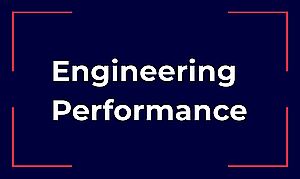As recently as a few years ago, specialists were the only ones talking about electromobility. But markets can change in a flash: what was once merely subject matter for engineering courses is now the topic of conversation at the breakfast table – from key aspects of the energy transition and a feared shortage of raw materials to the role of cell production and the number of gigafactories which will soon be necessary to supply the millions of electric vehicles with lithium‐ion batteries. But you can’t really grasp the full complexity of this market until you’ve examined the entire journey: these days, what we refer to as a ‘battery’ in an electric vehicle tends to be a bundle of many individual battery cells controlled via a battery management system. A battery manufacturer often just assembles blocks out of cells like these, but sources the cells from a cell manufacturer, which orders cathode materials from large-scale suppliers. These in turn purchase raw materials such as cobalt, lithium and nickel from mining companies. And exploration companies such as us, Rock Tech Lithium Inc., can be found at the very beginning of this chain.
There’s no e-mobility without lithium
The raw material of the energy transition
Lithium is the raw material that plays a key role in the development of electric vehicles, as lithium‐ion batteries are lighter and have a higher energy density than the lead-acid or nickel-cadmium batteries more common in the past. Lithium technology was the first to make ranges of 400 to 500 km possible with a single charge and it’s ranges like these that increase acceptance of electric vehicles as a replacement for the internal combustion engines we’re accustomed to. And it’s only once electric vehicles have been fully accepted that we can actually talk about an energy transition and reduce CO2 emissions. Of course, that also depends on how we generate the required energy in our society. Only renewable energies can truly make electricity and electric vehicles green.
On the one hand, the rising demand for lithium has an impact on the prices of batteries – and thus electric vehicles. On the other, it has led to a reassessment of lithium deposits around the world, most of which have already been identified, though mining hasn’t been profitable thus far. For example, the pegmatite containing spodumene of our Georgia Lake project in Canada was discovered in 1955. But it has only become clear in recent years that mining could be worthwhile. We therefore commissioned DMT as an engineering service provider in 2017 to reassess and evaluate the lithium content in the deposit. The aim is to transform resources into reserves, which means further developing known deposits into economically viable sources of raw material.
Much more lithium at Georgia Lake
DMT developed a new drilling concept for us in 2017 for the purpose of updating the entire geological model of the deposit. DMT offers the benefit of not only being a consultant and preparing theoretical studies, but also implementing its recommendations in practice. Thanks to centuries of experience in mining, you get the feeling they know exactly what they’re doing. And at the same time, DMT has understood the demands of the markets: they operate quickly, reliably and transparently. We were provided with the findings of the commissioned surveys in summer 2018: based on the recognised Canadian National Instrument 43-101 standard, the assessment estimated the deposits to be 40 per cent larger than previously assumed and more than doubled the resources of the ‘measured and indicated’ category. And, of course, that’s not only good news for battery producers and car manufacturers, but also for our investors, in particular. After all, DMT has also completed the preliminary economic assessment (PEA), the first official evaluation of the asset values and the profit potential, which with a predicted annual EBITDA of CAD 64 million (Canadian dollars) is almost twice as high as the current market capitalisation.
Several new battery factories in China will begin operating this year with a production capacity of over 50 GWh, whilst the EU currently sees a need for 20 gigafactories in Europe alone. Based on these developments, we predict a rapid increase in the demand for lithium – and have made the decision to no longer explore, but produce. For this step, too, we’ll be placing our trust in the expert advice of DMT.




